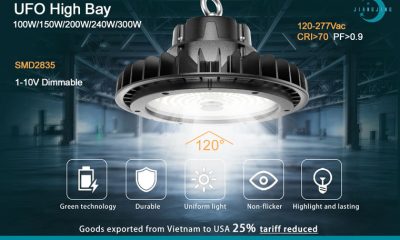Industrial lighting is far more than just a source of illumination. It is a vital factor in the operation of factories, warehouses, and industrial sites, directly affecting worker safety, productivity, and energy efficiency. Modern lighting solutions, particularly LED systems, are transforming industrial environments by offering better lighting quality and reduced energy consumption. This article outlines the key reasons why industrial lighting is so important.
Safety Enhancement
Safety is the top priority in any industrial setting. Proper lighting helps minimize the risk of workplace accidents, which are often caused by poor visibility. Many industrial sites involve high-risk tasks that include operating heavy machinery, handling hazardous materials, or navigating large storage spaces. Inadequate lighting in such environments can result in tripping, falling, or misreading crucial safety signs, which can lead to injuries or even fatalities.
By ensuring adequate illumination across all work areas, industries can greatly reduce these risks. LED lights, for example, provide consistent, bright light without flickering, which helps workers maintain focus and reduces eye strain. They also enhance visibility in emergency situations, allowing for faster evacuation or action. Well-lit areas make it easier to spot potential hazards, improving both worker safety and overall site security.
Boosting Productivity
Beyond safety, industrial lighting has a significant impact on productivity. Employees working in well-lit environments are more focused and efficient. Poor lighting can lead to fatigue, slower reaction times, and reduced morale, which ultimately hinders productivity. In contrast, well-designed lighting systems reduce strain on workers, enabling them to perform tasks more quickly and accurately.
For environments such as manufacturing plants or assembly lines, where precision and speed are critical, optimal lighting can dramatically enhance output. LED lighting solutions, in particular, are known for their clarity, improving attention to detail and reducing mistakes. In this way, investing in proper lighting directly influences the efficiency and success of daily operations.
Energy Efficiency and Cost Savings
The shift to energy-efficient lighting, especially LED technology, has provided industries with the opportunity to reduce operational costs. Traditional lighting systems, such as fluorescent or halogen lights, consume large amounts of energy and have shorter lifespans. In contrast, LEDs consume significantly less electricity, last longer, and require less maintenance.
This improved energy efficiency translates into considerable cost savings. With less frequent replacements and reduced energy bills, industrial facilities can reallocate resources to other critical areas. In addition, LED lights are eco-friendly, contributing to sustainability efforts by lowering carbon emissions and reducing waste.
Industrial lighting is essential for creating a safe, productive, and energy-efficient work environment. By investing in high-quality lighting systems, such as LEDs, businesses can reduce workplace accidents, enhance productivity, and lower operational costs. The benefits of proper industrial lighting extend far beyond illumination—it directly impacts the overall success and sustainability of industrial operations. As technology continues to evolve, industries can expect even greater advancements in lighting solutions, leading to more efficient and safer workplaces.


